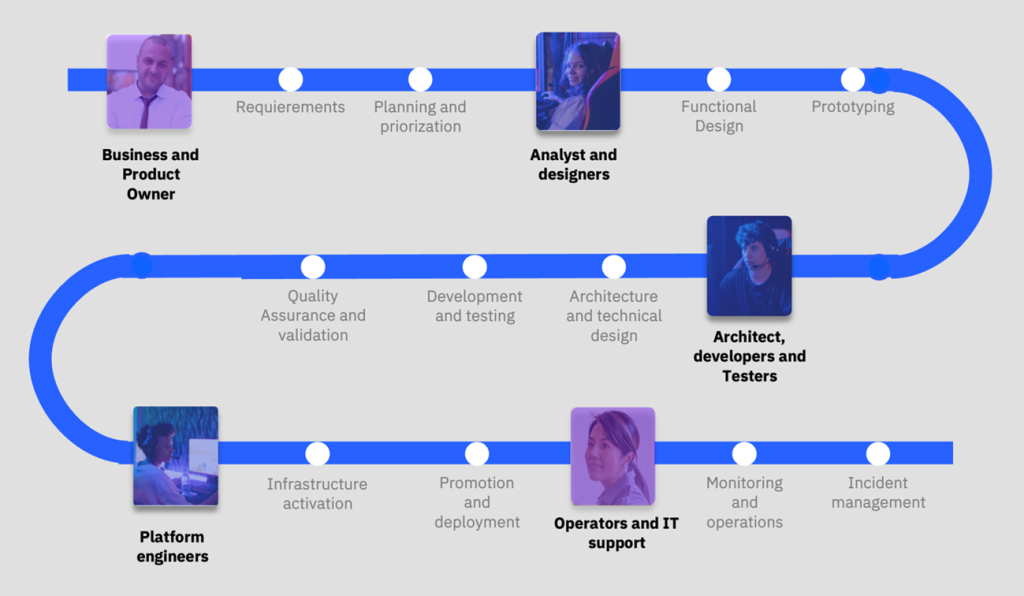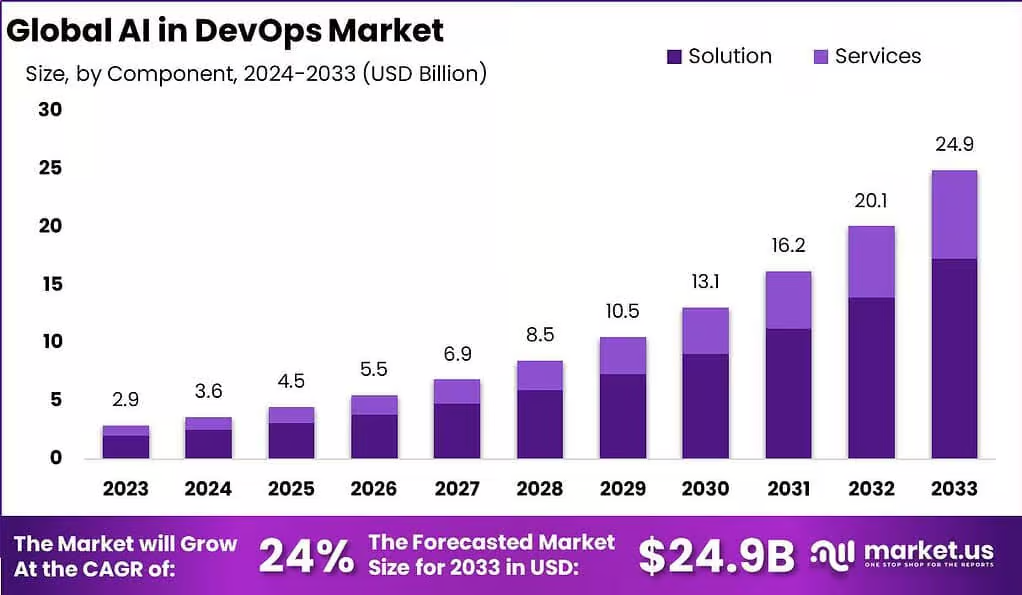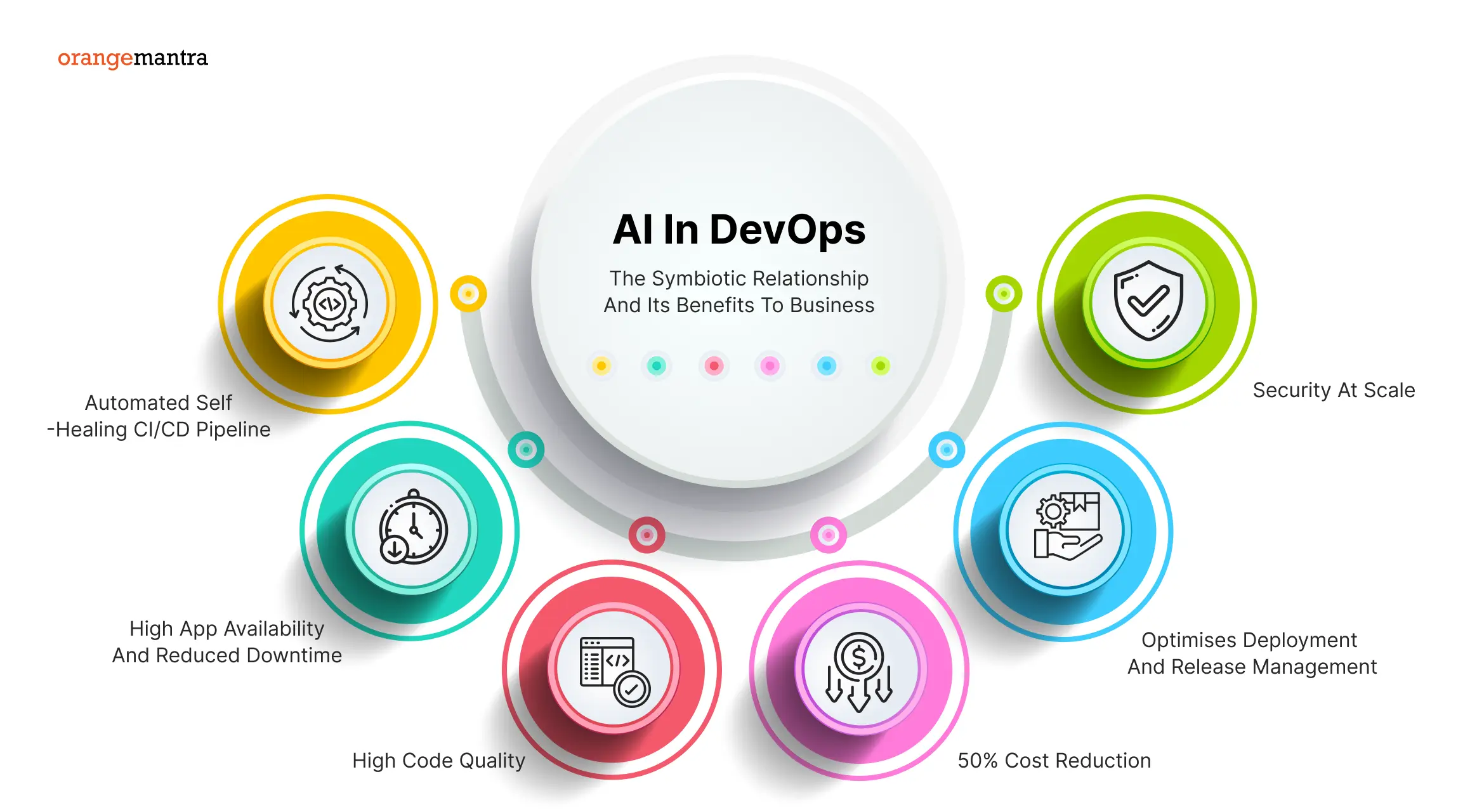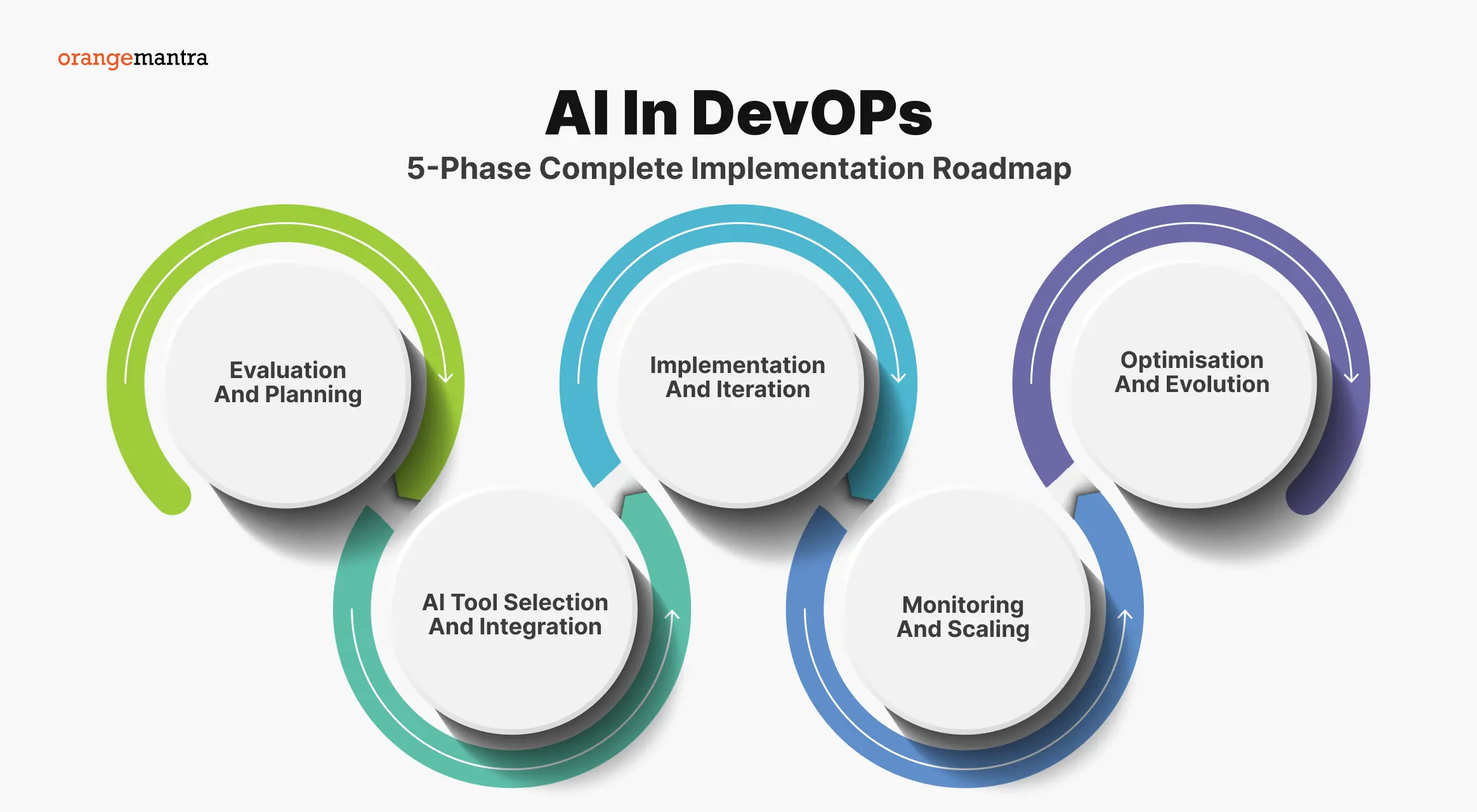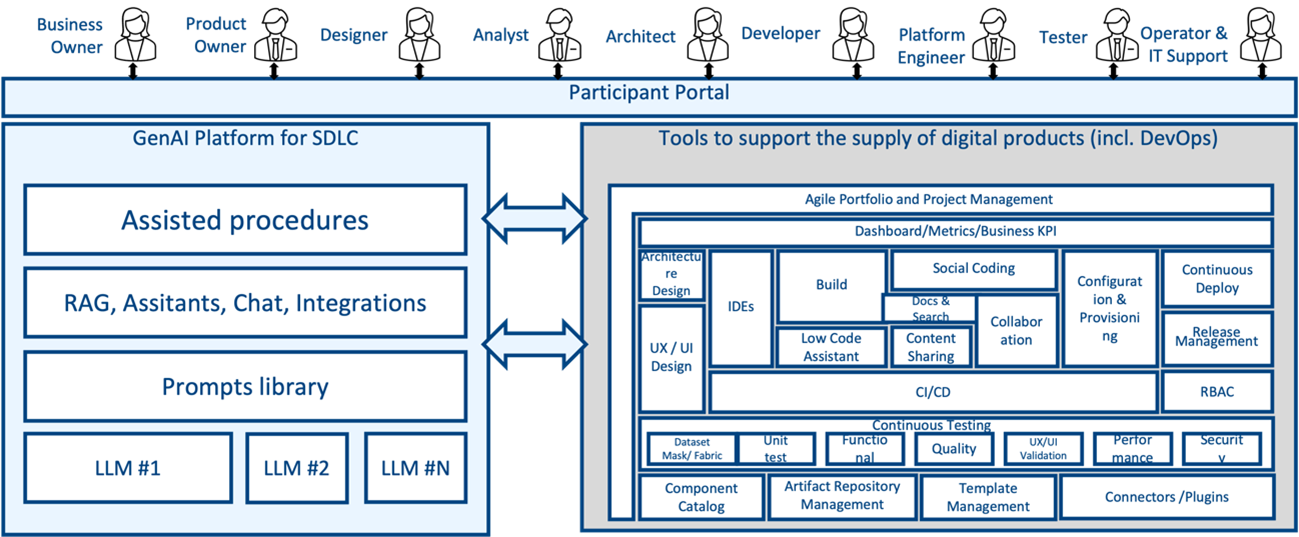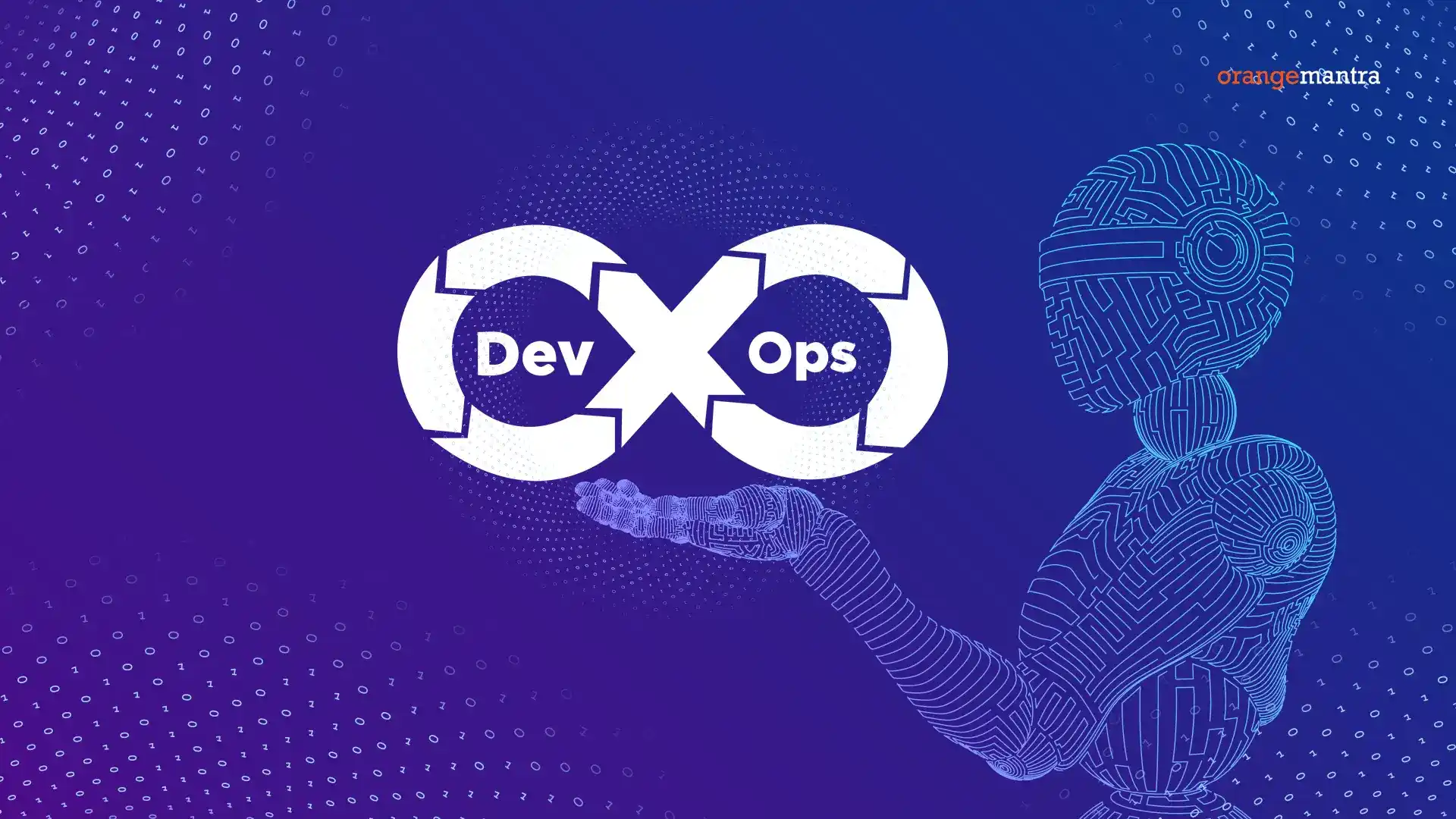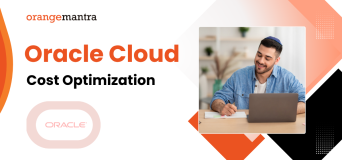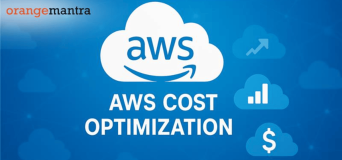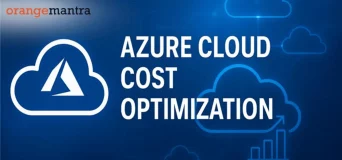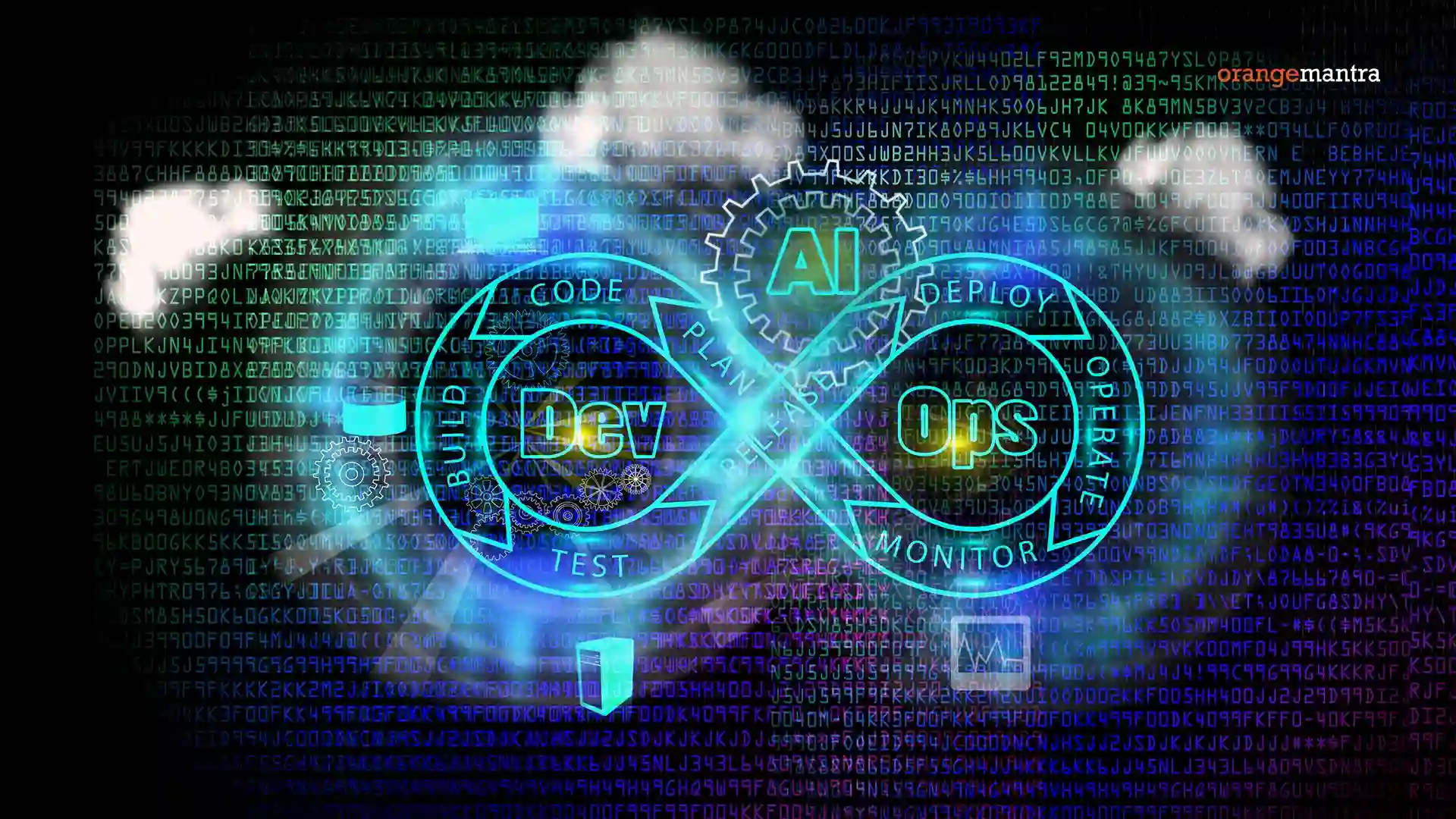
Here’s what you will learn:
Integrating AI into your business is the need of the hour. The intelligent technology is not only changing business processes but, in fact, transforming businesses altogether.
Several businesses have reaped the huge windfall benefits of AI integration into their business processes and witnessed skyrocketing growth. The more complex the process, the greater the scope of growth.
One such complex process that makes the most of artificial intelligence is DevOps.
AI in DevOps not only expedites the software development process but also enhances the quality of the outcome. Moreover, AI development services develop a symbiotic relationship with the DevOps system and grow along with it, completely transforming the DevOps approach into a continuously evolving ecosystem.
The integration has a lot of potential, and this piece is a comprehensive discussion of it. We will cover the relationship between DevOps and Artificial Intelligence, and the benefits AI brings to the process.
And most importantly, it includes a detailed step-by-step road map to integrate AI in the DevOps process.
Table of Contents
The State of AI in DevOps: Data-Backed Insights for 2025
- More than 68% of deployments now run on cloud platforms. It is the perfect foundation for AI-powered DevOps automation
- 99% of organizations see positive results after adopting AI in DevOps.
- 61% report improved quality of deliverables using DevOps.
- 86% of professionals prefer DevOps for faster development and release.
- Serverless computing is becoming more popular.
- Top DevOps teams restore services in less than a day after incidents. All thanks to AI in DevOps.
- DevSecOps adoption is growing: 37% fully integrated security, 33% partially.
What is DevOps?
DevOps is an incredible approach that establishes a tandem between the development team and the operations team.
See, essentially, the software development process involves two teams:
- Development Team
- Operations Team
The development team is responsible for planning, designing and building a software product. The operations team is responsible for testing, deploying, and monitoring the product.
In the traditional approach, before people used to hire DevOps engineers, both teams worked in silos with minimal to no communication and collaboration efforts. This resulted in multiple issues, such as:
- Delayed Delivery: teams used to wait for the other team to finish their work
- In-efficiency: longer time to market with a lack of automation.
- Higher Error Occurrences: Manual testing may not detect errors very effectively.
- Limited Scalabity: difficult to work on a large project with this approach
- Poor change management: any change will require huge adaptability issues.
And much more.
Image taken from AWS blogs showing typical participants through phases of SDLC
To tackle these issues, DevOps was developed in the early 2000s. The approach introduced a more collaborative and efficient approach, aiming to break down silos, promote automation, and enable continuous integration.
All this was to ensure faster delivery with a better outcome and several advantages, such as:
- Shortened development cycle
- Increased deployment frequency
- faster product delivery
- Higher product quality.
Now let’s start with the second aspect of our discussion: Artificial Intelligence and its role in DevOps.
Image taken from market.us
What is Artificial Intelligence (AI)?
Artificial Intelligence, or AI, is a pathbreaking subfield of computer science that instills machines with intelligence. With this newfound power of AI, machines can perform tasks that otherwise require the intelligence of a human, such as
- analysing complex data patterns
- making predictive decisions, and even
- understanding natural language interactions with users.
All these tasks require cognitive abilities such as learning, reasoning, and problem-solving and AI infuses just that into machines.
The scope of AI cuts across industries, with new utilities emerging with each passing day.
- Now, customer service chatbots understand human language and offer personalised solutions in no time.
- AI learns from experience by analysing historical patient records to suggest tailored therapies based on successful outcomes.
- AI-controlled robots perform repetitive tasks like assembling or packaging with precision.
- AI algorithms autonomously make investment decisions by analysing market data, trends, and economic indicators.
In fact, the space here is too limited to explain the full potential of AI.
For now, let’s get back to our main topic on how to use AI in DevOps.
AI in DevOps: The Symbiotic Relationship and its benefits to business
AI and DevOps share a symbiotic relationship, meaning that both of them affect and enhance each other.
At the start of the integration process, AI enters the DevOps ecosystem and focuses primarily on improving the different aspects that make-up the whole system.
For instance, AI automates testing, improves monitoring, or assists in decision-making, thereby bringing efficiency, reliability, and speed to DevOps practises.
Over time, the AI keeps getting integrated deeper into the system, gathering data and learning and improving itself from the experience.
As a result of this whole symbiotic relationship, the whole ecosystem of DevOps-AI starts transforming and evolving in a continuous fashion. Now it not only offers suggestions but is also able to predict potential issues and even autonomously optimise workflows.
It introduces more adaptive, self-improving, and predictive elements into the DevOps system, thereby influencing and evolving the entire practise.
In this whole give and take relationship between AI and DevOps, businesses have a lot to benefit from. And that’s why they started hiring AI developers.
Automated Self-Healing CI/CD Pipeline
AI automates the CI/CD process of building, testing, and deploying software application code. Hence, any updates to the software are automatically tested, integrated into the existing codebase, and deployed right away.
This reduces errors, improves quality and hastens the delivery of the application under development. Further, AI infuses the DevOps with the self-healing factor.
As we discussed above, once AI is deeply integrated into the DevOps process, the technology uses its learning and experience to transform the CI/CD pipeline over time.
It evolves the system so that it automatically detects and corrects issues without requiring any human intervention. Consequently, it maintains the stability and reliability of the system with its proactive approach.
High App Availability and Reduced Downtime
Talking about the benefits of AI-automated testing.
Since AI automatically analyzes the application codes, identifies patterns, and predicts potential issues proactively, automated testing detects issues early in the development cycle.
Thus, the resulting software application attains improved operational performance and availability while reducing Mean-time-to-recovery (MTTR).
Put simply, AI uses machine learning development to identify and fix problems in your applications beforehand, making them run better with little to no downtime.
This benefits you by keeping your apps way more available to the user with better functionality than before, thereby improving the user experience and winning and building over their trust.
High Code Quality
AI keeps an eye on your code 24*7 ensuring high quality in less time. The smart technology spots bugs, critical issues, and gaps in security with high speed and accuracy.
It learns from the huge pile of data from the DevOps processes and builds its vast experience over time. Then, among other things, it uses this experience to set a standard for checking future code.
This instills continuous improvement in the app development process, expediting the process while ensuring a high quality outcomes with robust security before the application reaches the end-user.
50% Cost Reduction
On the same lines, AI algorithms process vast amounts of data to identify insights and present them as actionable intelligence for data-driven decisions. This improves efficiency and helps identify areas for improvement.
The best part is that, with the data visualisation capability of AI, developers and IT operators can clearly understand even the most complex of issues and use it to improve outcomes, including code efficiency.
This not only reduces the running time but also saves almost half of the cost spent on resources.
Optimises Deployment and Release Management:
AI optimises deployment strategies by analyzing past data on deployment, user behaviour, and system performance. This leads to more efficient and reliable deployment processes while reducing the risks associated with new releases.
Security at scale
AI automated CI/CD pipelines facilitate smooth ongoing improvement and integration into your software applications. This offers two benefits. First, the developers gain confidence of writing secure code infused with the best practises in the space. Second, the process is suitable to identify lacunae at scale.
Given all these benefits, its definitely a must to include AI in DevOps. So, how to do it? How DevOps Developers team take advantage of AI? The answer is in just the following 5 steps.
AI in DevOPs: 5-Phase Complete Implementation Roadmap
The integration of AI into DevOps can be achieved in a phased manner. Starting with the evaluation of existing DevOps processes to identify pain-points. Then it goes to setting SMART goals for AI implementation to address these pain points while bringing the team on the same page.
In the second phase, the roadmap offers a detailed guide to ensure meticulous tool selection using methods like POC and benchmarking.
The third phase will help you with the actual unification of Devops and Artificial Intelligence and how to continuously refine the system through data-driven insights.
The fourth phase is about monitoring the whole process and making the necessary changes as and when required. It focuses on robust monitoring, scalability planning, and collaborative documentation to ensure smooth scaling.
Finally, the fifth phase emphasises continuous optimisation, staying updated on emerging trends and tech, and fostering cross-team collaboration for successful AI-DevOps integration.
We have also included an example of a company to better explain the complex part of the integration process. It includes a scenario wherein a company aims to enhance its customer support efficiency through AI integration within their DevOps framework.
Want to Apply AI in Your DevOps Workflow?
Leverage AI-driven monitoring, predictive analytics, and automation to improve deployment speed, reliability, and system performance.
Phase 1: Evaluation and Planning
Holistic Evaluation:
You need to start by assessing your existing DevOps processes. The assessment should be comprehensive while primarily focusing on two aspects: existing bottlenecks and potential areas for AI integration.
For example, a company looking to enhance its customer support may ask the DevOps team to conduct extensive research by analysing customer feedback and having discussions with customer service representatives (CSR).
So, by analysing customer feedback, they may find that customers are frustrated and dissatisfied due to the delays in receiving responses, even to the most common queries.
On the other hand, from the discussions with CSR, they may find that the customer service team spends a significant amount of time handling repetitive and straightforward inquiries.
These are the two pain points that the company in question should keep in mind while charting out its integration goal.
Strategic Goal Setting:
Once you know where you need AI’s assistance, now is the time to set goals for your integration process. For this, you need to define goals based on the criteria of SMART (S – specific, M – measurable, A – achievable, R – relevant, T – time-bound).
Here, you should be very thorough and ensure that these goals align the AI integration with your overall business objectives.
Going back to the above example, the DevOps team may set a specific AI integration goal, i.e., chatgpt integration system into the customer support platform.
This chatbot will be able to handle trivial and monotonous routine inquiries by providing instant responses. Moreover, it will escalate more complex issues to human representatives.
Here, the SMART criteria will require you to plan your goal in the following manner.
-
S – Specific:
You should set a specific goal devoid of any vagueness. For instance, you can set a goal to implement the chatbot to handle 60% of routine inquiries within the next six months.
-
M – Measurable:
The goal should be quantifiable and measurable. For instance, by deploying the chatbot in the next six months, the company should aim to reduce its KPI of response time by 40% within three months of the chatbot’s implementation.
-
A – Achievable:
The goal should be realistically achievable and should not be set on emotional grounds. The timeframe should be just right, keeping resource availability in mind.
For the same instance, you can aim to train the chatbot on a diverse dataset covering 80% of common customer queries within the first two months.
-
R- Relevant:
Another important criteria is the relevance of the goal to the broader business objective of enhancing customer service. It should directly tie the AI integration’s success to an essential metric affecting the customer experience.
In this example, the company can aim to increase customer satisfaction scores by 20% within six months of the chatbot’s launch.
-
T – Time-Bound:
Lastly, the goal should have a specific timeframe, providing a clear deadline to work towards while ensuring accountability for achieving results within that period.
Cross-Functional Training:
Once the goals are set in place, you need to conduct cross-disciplinary training sessions to bridge AI understanding across DevOps teams. This will ensure that the teams, including their members, are on the same page, speaking the same language, and sharing their understanding.
Phase 2: AI Tool Selection and Integration
After the goals are set and the teams are brought to the same page in terms of planning and execution of the AI integration, now is the time to execute the second phase of the integration process.
This phase involves the selection of the right AI tools and integrating them into the DevOps system, following the best practises.
Image showing Gen AI SDLC solution and existing client’s platform via AWS.
Thorough AI Tool Assessment:
Here, you need to identify and prioritise tools that facilitate seamless AI integration with existing DevOps stacks. The selected tools should be in sync with their scalability and robustness in handling diverse data.
Rigorously PoC and Benchmarking:
This step requires carefully checking if the selected AI tools withstand the scalability of your business and fit well with your business objectives.
This is done in two steps:
- POCs (Proof of Concept): You can try a new tool in a small, controlled environment and assess if it works the way it’s supposed to.
- Benchmarking: then moving on to comparing that performance against the specified goals you have set, ensuring they’re meeting their requirements or expectations.
Automated Integration Strategies:
After selecting the tools that fit the requirements, you need to develop automated deployment strategies for the selected AI tools within DevOps pipelines.
In simple terms, this means using scripts and tools to set up the new AI tools in your DevOps system automatically.
For this, you need to:
- Write scripts to install and configure the tools.
- Use automation tools to execute these scripts.
- Set up continuous integration for automatic updates.
- Test the setup and monitor the tools’ performance without much manual work.
This will streamline the process, saving you time and reducing the chances of errors during integration. Importantly, this will ensure smooth incorporation and minimal disruption and bring us to phase 3 of the implementation of the strategy.
Phase 3: Implementation and Iteration
So Phase 3 is about implementing your AI integration plan. Here, you need to take a step-by-step data-driven approach for better flexibility and adaptability of the AI tools.
Incremental Rollouts:
You need to deploy AI integrations by taking one step at a time and focusing on specific use cases to measure the impact while mitigating risks and facilitating smoother adoption.
To put it simply, you can start by implementing AI in specific parts of your DevOps setup rather than changing the whole process altogether.
This gradual approach allows for testing and learning from each step before moving on to the next. This way, you will be able to reduce risks and handle problems easily.
Data-Driven Refinement:
Further, you need to continuously gather and analyse data from AI implementations and keep refining algorithms on the go.
Agile Feedback Loops:
You can choose agile methodologies for implementation. This will help you incorporate feedback quickly and adapt AI components to evolving DevOps requirements.
Now that the implementation phase is over, you need to monitor the AI tools and scale them according to your business needs. However, you might require DevOps consulting services during some or all of these phases.
Don’t hesitate to use them. All you need is to find the right DevOps/AI development services.
Phase 4: Monitoring and Scaling
Phase 4 is about taking a back seat to let the AI do its work. All you need to do is monitor its functionality. And when all these things start to fall into place, don’t shy away from scaling your business.
Also Read: DevOps Monitoring Tools
Real-Time Monitoring and Alerts:
Start with implementing robust monitoring systems for AI components with real-time tracking of performance and responding to anomalies in real time.
Scalability Planning:
Then, as we also mentioned above, you need to assess your business scalability needs and ensure that AI integrations are capable of handling the increased workloads that come with business scaling and evolving with increasing demands with ease.
Documentation and Knowledge Sharing:
It is advisable for you to maintain comprehensive and detailed documentation of your AI integration processes. This will facilitate knowledge sharing and enable smoother onboarding for new team members.
Phase 5: Optimisation and Evolution
Now comes the final phase of our AI and DevOps integration process, which involves optimising and evolving the whole DevOps setup with the help of AI.
Continuous Optimization:
To achieve inch-perfect optimisation of the DevOps processes, utilise AI-driven insights and leverage its predictive analytics. Plus, use automation to achieve efficiency and speed.
Technology Vigilance:
Keep in mind that business evolution is an ongoing process to attain success. You need to stay updated on emerging AI technologies and trends, as well as the best practices in the industry. Moreover, you need to lead by example and foster a culture of innovation and evolution within the DevOps ecosystem.
Cross-Team Collaboration:
You also nurture ongoing collaboration between DevOps teams, encourage shared learning and ideation, and collaborate on problem-solving.
This ends our complete and detailed roadmap for infusing AI in DevOps. Following these steps will make AI-DevOps integration more strategic, iterative, and adaptive, and will ensure your sustainable business growth.
However, if all these seem way out of your expertise, time and energy, you can bypass it with Azure DevOps AI. Azure DevOps platform leverages several AI tools and functionalities to enhance various aspects of your DevOps lifecycle,
However, you should be wary of some issues and challenges that may arise.
Also Read – Top DevOps Consulting Companies to Know in 2025
Limitations and Challenges of AI for DevOps
Integrating AI in DevOps is a complex process that needs to be implemented in a diligent and rigorous manner. Knowing the challenges will help you be better prepared for the integration and ensure smooth implementation of the process.
Complexity of Implementation:
Integrating AI tools often requires expertise and understanding of both AI and DevOps, which might not always be readily available within a team. Hence, it is highly advisable to consult an expert before moving ahead with the roadmap we shared above.
High-quality Data in Quantity:
Since AI relies heavily on data, ensuring high-quality data availability in sufficient quantities is also a challenge, especially for smaller teams or projects. While if you have internal data sources like your teams, in-house data specialists or data engineers, its better.
Otherwise, you can reach out to third-party AI development companies, open-data repositories, or data partners. The choice depends on your business operations and its objectives.
The notorious AI Bias
This is an important one. Depending on the data they are trained on, AI systems can inadvertently perpetuate biases. Ensuring fairness and ethical use of AI within DevOps processes is critical but challenging.
That is why, in the above roadmap, we suggested taking the Proof of Concept and benchmarking approach for choosing the suitable AI tools for your business. This will help you check if the AI tools have biases and identify the best one for your business.
Resource Intensive:
AI implementation requires significant computational resources. This means you need to shell out extra financial resources to meet the infrastructure and operational demands.
However, advancements in technologies like cloud computing will help you in this area. Not to mention the resource optimization that AI brings with itself to make things balanced.
Change Management
Introducing AI into an existing, well-established DevOps workflow is a challenge in itself. You may face resistance internally or may require significant adjustments in the existing processes and culture. Here, your leadership, management skills and awareness of AI will do the job.
Addressing these challenges involves planned efforts, including team upskilling, managing your resources, and handling change effectively. But there is no doubt that the benefits of infusing AI in DevOps outweigh these challenges. However, if you are still not convince you can opt for Azure DevOps AI solution to make a smooth transition.
Examples of AI Tools in DevOps
DevOps is all about automation and automation is not possible without AI DevOps tools. Although there are many, but here we are listing some of the major and most used AI tools for DevOps.
| Tool Name | What It Does |
| Mabl | Provides intelligent test automation with self-healing tests and insights to detect bugs early. |
| Dynatrace | Uses AI to monitor applications, detect anomalies, and provide root cause analysis in real time. |
| New Relic AI | Applies machine learning to analyze app performance and identify issues proactively. |
| PagerDuty | Leverages AI for intelligent alerting, event correlation, and incident prediction. |
| Testim | Automates UI testing using AI to create, execute, and maintain tests with minimal manual effort. |
| Splunk ITSI | Uses machine learning to provide insights on IT operations, predict outages, and improve reliability. |
How AI impact future of DevOps?
The DevOps AI space is constantly evolving, with new technologies and tools hitting the market with each passing day. These technologies, like edge computing, serverless architectures, and adaptive infrastructure provisioning, are reshaping how DevOps integrates AI.
As a result, businesses can now attain faster, more efficient, and scalable solutions that redefine the boundaries of innovation within the industry.
To answer “How AI impact future of DevOps”, we would say that with all these ongoing developments and the constantly evolving AI ecosystem, the future of DevOps with AI holds immense possibilities:
- seamless automation,
- predictive analytics-driven decision-making,
- and adaptive infrastructure
- and much more.
AI will optimise workflows, enhance collaboration, and enable rapid, agile responses to dynamic challenges, transforming DevOps into a powerhouse of efficiency, innovation, and continuous improvement.
So, for a business decision maker, we would earnestly suggest to start today.
Conclusion
To sum up, integrating AI into DevOps is a complex yet pathbreaking process. With DevOps-AI integration, you can deliver more and better. It gives your software development process a big boost while improving communication and collaboration within teams and better utilizing resources to cut costs.
However, it is not as simple to achieve, and the 5-phased roadmap shared above will help you with it big time.
Moreover, the challenges and their solutions we shared above will make you well-positioned to kickstart the integration process with the right foot.
FAQs
What is the role of AI in DevOps?
AI in DevOps enhances automation, improves predictive analytics, and optimises processes by leveraging machine learning and data-driven insights.
How does AI impact software development in DevOps?
AI streamlines development by automating testing, identifying and fixing issues faster, and enabling predictive maintenance for more reliable software.
Can AI replace human roles in DevOps?
No. Although AI augments human capabilities in DevOps by handling repetitive tasks, analysing vast datasets, and offering insights, human oversight and decision-making remain crucial.
What challenges does AI integration bring to DevOps workflows?
Challenges include skill gaps, ethical considerations, managing large datasets, and ensuring AI models align with DevOps goals without causing disruptions.
How can a DevOps team take advantage of AI?
From my experience, AI offers huge opportunities for DevOps teams to work smarter. Teams can automate routine tasks like testing, deployment, and monitoring. AI also helps predict issues before they cause downtime by analyzing system data and patterns.
Smarter monitoring is another big win. AI cuts through alert noise and highlights real problems quickly. It also optimizes CI/CD pipelines by learning from past releases.
